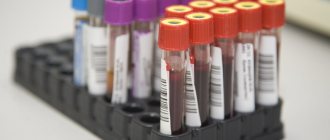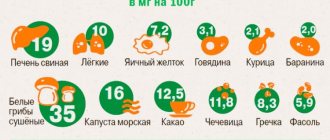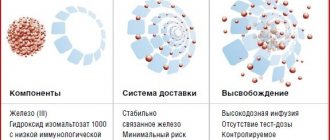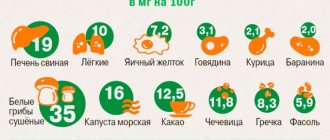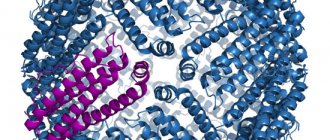CA-19-9 is a protein produced by pancreatic tumor cells. Normally, it is present in the tissues of various organs, primarily related to the gastrointestinal tract. The glycoprotein is also found in seminal fluid. Deciphering the result for the cancer antigen CA-19-9 must be approached very carefully, since an increase in its level cannot be interpreted unambiguously.
For example, in women after 50 years of age, the protein level may be higher than normal, and in some representatives of the Caucasian peoples, due to a genetic feature, the tumor marker in the blood serum is completely absent, since it is not produced by the body. The analysis is not suitable for accurate differentiation of the disease and early diagnosis of tumors, so it is carried out in combination with the study of other antigens - CA-125, HE4, AFP, CEA.
Specifics of the study
The first thing you need to know about this test is that its results are not definitive proof of cancer development.
This antigen does not belong to the category of specific and sensitive exclusively to mutated cells. Protein specificity rates range from 75 to 100 percent, which, combined with sensitivity of 68 to 93 percent, makes false-positive rates likely. However, if the norm is exceeded a hundred times or more, there is a 96 percent chance of having cancer. Once the problem is detected, the doctor can prescribe adequate therapy. Scientific studies show that those patients whose test results showed a decrease or stabilization of indicators have a better prognosis than patients with increasing values.
Among the distinctive features of the study it is worth noting:
- the need for additional screening diagnostics;
- the likelihood of undetecting a pathogenic protein in a person with a certain blood type, even in the presence of tumors and metastases;
- often carried out in combination with CEA or CA 72-4, if the doctor thinks that the patient has a neoplasm in the intestines or gastric carcinoma.
So, you now know what antigen means, so you can begin to determine which categories of patients are prescribed for examination.
REA
The CEA marker is secreted mainly by the digestive tract of the fetus. In adults, the substance is found in the blood in minimal quantities.
Normal: up to 6.3 ng/ml. A slight increase in CEA norms is determined in smokers. With high marker levels, there is a risk of neoplasms in the following organs:
- digestive tract; - mammary gland; - prostate; - liver; - lungs.
CEA analysis is recommended if:
• shortness of breath, causeless cough; • appearance of a visible tumor; • chronic fatigue; • unreasonable loss of strength; • sweating; • prolonged increase in body temperature; • weight loss; • appearance of new moles; • loss of appetite or complete reluctance to eat with attacks of nausea and vomiting; • disturbances in the functioning of the digestive tract.
Purpose of the procedure
The most common cases when there is a need to check compliance with the antigen standard:
- Prevention of cancer pathologies in people with an unfavorable family history - if there have been cases of gastric carcinoma and similar diseases in the family, the health status must be closely monitored.
- Obvious symptoms of the development of a neoplasm in the pancreas or already identified cancer.
- Detection of recurrent disease.
- Monitoring the degree of effectiveness of anti-cancer therapy - based on the decoding of the analysis and the difference from the norm of the tumor marker Ca 19-9, the doctor can understand whether the prescribed treatment has the desired effect, and, if necessary, make adjustments to the regimen.
- Checking the assumption of the development of malignant or benign neoplasms in the liver, gall bladder, gastrointestinal tract, and bile ducts.
- Determining the dynamics of the patient's condition.
- Detection of metastases before characteristic signs of disease spread appear.
In addition to cancer, the study can detect cystic fibrosis, cholecystitis in the chronic stage, cirrhosis of the liver and gallstones, as well as a number of inflammatory pathologies. An experienced oncologist knows exactly what the Ca 19-9 tumor marker shows and can use the data obtained to prescribe other necessary examinations and establish a diagnosis. Often, it is the decoding of this analysis that helps to identify the disease at a stage when a clear clinical picture has not yet formed. It is much easier to defeat cancer at an early stage, so if the doctor prescribed it, it means there is a need for it.
Who needs analysis and when?
Screening tests should be carried out 1-2 times a year for those patients who have a genetic predisposition, benign neoplasms, suspicious papillomas and moles. Other people can be tested no more than once every two years, and also:
• after severe nervous strain; • when living in unfavorable environmental conditions; • under other circumstances that may cause cancer.
People are recommended to do screening tests more often:
• with a diagnosis; • with a treated malignant tumor; • upon initial detection of a neoplasm; • before and after surgery; • during a course of therapy.
Those who have recovered are recommended to check their tumor marker levels within 3 years after treatment is completed:
1. First year – every month. 2. Second year – once every two months. 3. Third year – once every three months. Subsequent years are analyzed every six months. Before screening, the patient must visit an oncologist, who will find out which markers need to be tested for.
What indicators are considered normal?
The international system of standards has not established the norm of the tumor marker Ca 19-9 in the blood. Differences in acceptable values are associated with variability in the methods for studying the biomaterial and the reagents used. If you carefully study the survey form, you will see that the standard values are indicated in the reference indicators field. For women and the stronger sex, the norm is identical and averages 10-37 (sometimes up to 35) units per milliliter.
Attention! Given the narrow limits of the norm, the analysis with decoding should be carried out for the first and subsequent times in the same medical center.
Excess in various pathologies
The likelihood of readings being higher than normal varies depending on the disease.
Mostly upward jumps in values occur when foci of cell mutation form in organs such as the gallbladder (in 90% of cases), mammary gland (70%), liver (90%), sigmoid and rectum (90%), pancreas (100%). %), ovary (70%), bile ducts, uterus. In such patients, during decoding, an increase in the tumor marker Ca 19-9 to 500 units/ml and above is recorded. As for benign processes, their values do not exceed the specified limit, and the chance that exceeded parameters indicate a disease is 50 to 50. Among the diseases during which the antigen in the blood becomes more than normal, there are acute, chronic and toxic forms hepatitis, cirrhosis, hereditary damage to the exocrine glands, cholelithiasis, gastrointestinal tract infections and cholecystitis.
References
- Pancreas cancer. Clinical guidelines, 2021. - 36 p.
- Grigorieva, I.N., Romanova, T.I., Suvorova, T.S. and others. Features of clinical symptoms in patients with pancreatic cancer. Experimental and clinical gastroenterology, 2015. - No. 5 (117). — P.84.
- Chesnokov, M.S., Shavochkina, D.A., Gorev, A.D. et al. Molecular biomarkers of pancreatic ductal adenocarcinoma and the possibilities of their use in clinical practice. Molecular medicine, 2013. - No. 6. — P. 21-26.
- Gundin-Menendez, S., Santos, V., Parra-Robert, M. et al. Serum CA 19.9 levels in patients with benign and malignant disease: correlation with the serum protein electrophoretic pattern. Anticancer research, 2021. - Vol. 39(2). — P. 1079-1083.
Recommendations for preparation
The informativeness and reliability of the data during the examination equally depends on the quality of the equipment, the professionalism of the laboratory technicians and the behavior of the patient himself. To avoid receiving false positive results, you must:
- inform the doctor about the need to take any medications - if possible, then you should stop taking medications for a day. If the drugs cannot be stopped, the doctor will take this into account when interpreting the analysis for Ca 19-9 tumor markers;
- do not drink alcoholic beverages for three days before the procedure, and do not smoke on the day of blood sampling;
- review your diet - so that the indicators are informative, it is undesirable to eat spicy and fried foods, give up exotic foods and fatty foods;
- come to the laboratory hungry - biomaterial is taken on an empty stomach, so the last meal should be 8 hours before;
- calm down - nervous experiences affect the composition of the blood, so before entering the manipulation room, sit for a couple of minutes in the hall;
- do not engage in heavy physical labor for about three days (this also includes intense sports training);
- warn if within 7 days before the procedure you underwent ultrasound diagnostics, magnetic resonance or computed tomography.
Indications for tumor marker analysis
During the period of active growth, cancer tissue absorbs nutrients and releases breakdown products, many of which are toxic. These processes affect human health, causing characteristic symptoms.
Any history taking begins with interviewing the patient. Doctors may be alert to the following changes in your health:
- a sharp decrease in body weight for no apparent reason;
- increased fatigue;
- refusal of food;
- constant or recurrent pain;
- frequent weakness;
- low-grade body temperature (from 37.1 to 38.0 °C for a long time).
Oncological pathology is also reflected in the results of standard blood tests. A general analysis can reveal an increase in ESR, a decrease in leukocytes or hemoglobin. Negative changes are also noted in the “biochemistry” of the blood.
Malignant neoplasms are characterized by a decrease in protein content, acceleration of blood clotting, and an increase in ESR.
Such research results in themselves do not indicate the growth of pathologically altered cells, but are a reason for additional examination. Including testing for tumor markers.
Exceptions are people from risk groups who are recommended to undergo this procedure regularly.
These include patients:
- with a hereditary predisposition (if cancer was diagnosed in relatives up to the second generation);
- upon returning from places of man-made disasters;
- survivors of significant intoxication;
- in the presence of benign tumors;
- living in settlements with poor ecology.
For men over 50 years of age, it is advisable to do a PSA test annually to timely detect changes in the activity of the prostate gland. The analysis is also indicated for those who have already been diagnosed with cancer. Studies are prescribed not only to patients undergoing treatment, but also to those who have been successfully cured. This allows you to stop possible relapses of the disease. Preliminary preparation of a person for analysis increases the likelihood of obtaining an accurate result.
How are the results deciphered?
It is up to the specialist to determine what the tumor marker Ca 19-9 shows. On medical forums you can find a large amount of information about what diseases provoke deviations from the norm, but without the help of a specialist it will not be possible to decipher them, as well as to select effective treatment tactics. Therefore, even knowing what an increase in indicators means, the patient should trust the doctor, who will carefully study the laboratory results and give an expert opinion taking into account a number of factors:
- age and gender of the patient;
- state of the body at the time of examination;
- presence of other diseases;
- data from other instrumental and biochemical studies;
- characteristics of the equipment and reagents used;
- previously detected cancer;
- family history;
- changes in normal values due to the need for the patient to take any medications.
No doctor will simply prescribe such a test, so if you receive a referral, you must immediately contact the laboratory. Israeli clinics are considered the best in early diagnosis of oncology and delight clients with reasonable prices. By contacting a reliable medical center like Assuta, you can count on prompt and highly accurate diagnostics, as well as attractive conditions for further treatment.
Elevated tumor marker (PSA)
PSA is a protein secreted by the prostate gland. A tumor marker will help identify a prostate tumor, adenoma. The analysis is used to monitor therapy.
Normal: up to 4.1 ng/l. If the norm is exceeded, then tumor markers indicate the presence of malignant pathology in the prostate. Experts recommend that men over 50 years of age be tested for prostate-specific antigen annually. This will help identify prostate diseases in the early stages, which will simplify therapy and make it as effective as possible.
To properly prepare for the analysis, you need to:
• stop eating food 10 hours in advance; clean, still water is recommended, other drinks are excluded; • you need to stick to a diet for two days; • you should not play sports and put as much stress on yourself as possible for several days. • seven days not to be sexually active.




